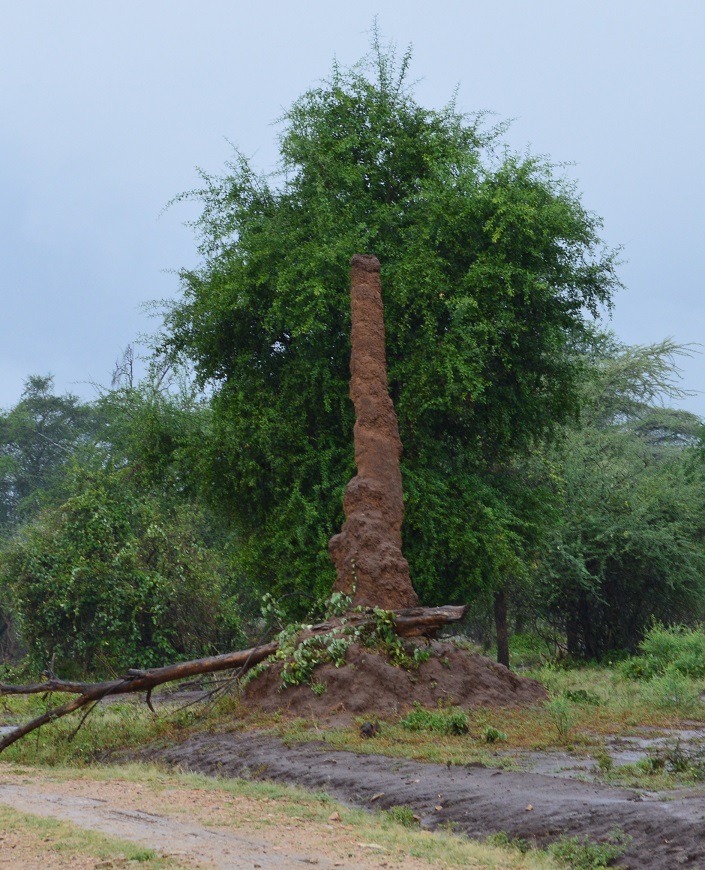Rimoi Game Reserve
Sorry to running behind with updates – I’ve been a touch under the weather. Today is better, much better, and I managed to walk into town, though the way I huffed and puffed, you’d have thought I was running a hard race. Oh well . . .
So, Rimoi Game Reserve. That was where Justin and I ventured on Tuesday. It’s about a 3500 foot drop down the escarpment from Iten. The paved section of road is pretty nice, much better than the majority of roads here. Kenya is gradually improving its transportation system but, as with all countries making a big technology jump from pedestrian to vehicular modes of movement, the infrastructure can’t get built fast enough. They’ll get there but, for right now, their roads are an obstacle to free-flowing commerce.
The vegetation along the escarpment as you leave the highlands behind turns incredibly lush with native plants. Banana trees, papaya, ficus, and jacaranda replace the ubiquitous eucalyptus until you venture off the tarmac.
That, by the way, is where the journey gained a little excitement. It is seventeen kilometers from the turnoff to the reserve. It took an hour to drive it. Justin shook his head. “Less than half marathon pace,” he said.
“Speak for yourself,” was my reply. I crewed Justin on a long run before I went to Iten. He turned 37 kilometers in 2:12. A marathon is around 40 kilometers. Do the math.
The best piece of this particular road.
The person who signed the guest book before us wrote that it was the worst road ever. It wasn’t but it was not a whole lot of fun. It did improve once we got to the reserve though. That road, built of crushed basalt, was in very good condition.
The scenery, in the meantime, had faded from lush to stark, barren soil, cut through with gullies carved by erosion, pillared with ant hills five to fifteen feet in height, and spiky acacia trees providing an intermittent canopy. In full sunshine, it would be hot as heck there.
We did not have full sunshine. We had depressing drizzling rain.
The rangers at Rimio were inside the metal huts, structures that resembles short grain silos. A little surprised to see us, they hustled out into the rain and took us to the office silo to pay the fees and wait for a guide. Got caught by surprise with the fee—in the good way. It was much less expensive than I had read online, 850 shillings for me (non-resident fee), 200 shillings for Justin (as a resident), and 500 shillings for the guide. The conversion rate is about 100 shillings to the dollar, for reference.
The guide sat in the rear seat of Justin’s car, an older Toyota Corolla, the kind that you can fix if something goes wrong, unlike today’s cars. For Kenya, it is a very sensible choice for a vehicle. The roads inside the reserve were in decent shape, but slippery. The deeper into the reserve we went, the more brush we encountered. Based on the positioning of the Kerio River, I think the reserve sits on a delta.
It didn’t take long to spot wildlife. A small herd of impalas stood around eyeing us. I went to take pictures and discovered that the lenses for my camera were fogged—and I had a hell of a time getting them to clear. The humidity was at ridiculous levels. I finally did get a couple of nice shots, and we went on our way.
Signs of elephants were strewn on either side of the road. If someone ever asks you to clean up after pachyderms, I suggest declining, citing worries about lower back strain.
A troop of baboons stepped out to the road, saw us, and faded right back into the bush. We drove by thirty seconds later and there was no sign that they had been there.
Justin and the guide could see things that I couldn’t. An interesting fact-if you take kid raised in the city to the woods, they can’t make out the various shapes of the animals. Their brains configured things to be relevant to their world and rewiring only can go so far. It would be fair to say I was partially blind.
Still hunting elephant sightings, we turned left on a road leading to Crocodile Campground. Lots of churned earth to show where they had been earlier in the morning, but not a whisper of where they were at the moment.
It was on this stretch that a mini-problem appeared, in the guise of the right front tire sliding into a rut, followed by the sound of metal on metal grating. Not good.
We got the Corolla out of the rut and took stock. It turned out that the rock plate underneath, a necessity on Kenyan roads to protect the vitals of the engine, had broken free and was pressing on the pulley assemblies. I counted this as great news, as I had feared that the fan was eating the radiator. I reached into the tire well and managed to get both hands on the edge of the rock plate. Thankfully, it was fairly thin metal and I could bend it away from the pulleys.
That still left the problem of the leading edge of the plate. It should have been tight to the front, acting as a deflector. Instead, it swayed like a scythe, catching everything.
I asked Justin if he had any wire. He shook his head and suggested shoelaces, then had a revelatory look cross his face as he procured aluminum wire, fairly thick, from the trunk. I got a little muddy tying things up as best I could. If we were careful, we’d make it.
We finished the reserve tour that way, wincing every time the rock plate dragged. Mind you, this was on the relatively good road in the park. We still had to deal with the seventeen kilometers of crap to get back to the main road.
About klicks in, a load bang announced that we might have a problem with the wiring job. Justin pulled over and we both got out to check. Coming the other way was a lorry, and they stopped to see if we were okay. A rapid fire exchange of Swahili followed, and one of the men climbed down to see the situation for himself. Another fast burst of words, and another guy got out, carrying baling wire.
You have to love baling wire. Thin enough to be able to be pulled taut, strong enough to survive a beating. Ten minutes later, the men had pulled the rock plate all the way up into position, which I couldn’t manage with the aluminum we’d had, and we were on our way again, feeling much more confident.
It took us just over an hour to pick up the main road again. The climb back up the escarpment put a strain on the engine. Not wanting to push our luck, we pulled over to let the engine cool.
The baboons here were considerably less bashful. I got some pictures and tried to find them in the brush – without getting too close, as baboons are very territorial. No dice, so we called it good and went home.









